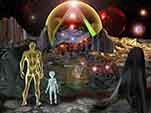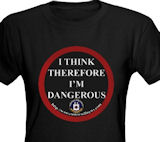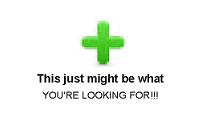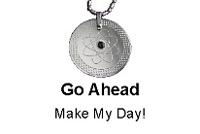Lack of critical thinking, addiction to social media where everything is presented in quips, and only a few mins long, all directly affect learning as well.
They have failed our students. Over and over.
*********************
By Jan Greenhawk
July 10, 2025
Anyone who has been in education for over the past two decades will tell you the truth.
They are dumbing down our students in the United States. If you don't believe it, you can look at the test scores nationally or in each state. Many will point to the pandemic as the cause, an excuse educators will gladly grab on to. While the pandemic caused serious problems with student learning, the causes are much deeper and more varied.
Other test results show math and reading scores the lowest in decades.
Test scores aren't the only measure of what education "experts" are doing to kids. Aside from spending valuable academic time teaching students gender ideology and racial/economic division, America's schools are secretly and silently lowering the academic standards for students AND altering content taught in school to make sure that today's students are ignorant about history, science, and math. Not only that, but they have also assured that students no longer are proficient in reading and writing.
That's a lot to unpack, especially if you are one of the former students of the education system who was subjected to what I call educational malpractice. I'm not calling you stupid, I'm telling you have been robbed of the education you should have gotten. That is unless you went to private school or were homeschooled.
I can hear the teacher's unions screeching in my ear as I write. "You just want to blame and demean teachers," they scream. No, I was a teacher. I think teachers are great people. Most of them really care about doing right by their students. But how can you be an effective teacher if you don't have the knowledge or skills YOU need? What if you have been indoctrinated into the social activist "definition" of your job? Or if your time is constantly being taken away by woke causes, disciplining students, or stupid administrative work?
You can't. Teachers were duped into thinking they had a great education AND that they would return the favor to others. Most of them have pure intentions of doing good. There is a segment of the bureaucracy that doesn't want them to be able to do that.
Let's begin with proof.
College Entrance Exams are being made less rigorous.
College entrance exams came about to "even the playing field" between schools where grades were inflated and schools where strict standards were upheld. They were a way for colleges and universities to accurately assess if a candidate for admission would succeed in their school. Were the tests perfect? No. There were students who didn't test well who went on to graduate with honors from college. There were students who scored very well on entrance exams who bombed in college. At any rate, they were the most objective manner to assess student success.
But now this is happening:
In her article above, Joanne Jacobs quotes college professors and test experts regarding how the SAT is making reading selections shorter for a generation of students. The difference in the reading selections is drastic as they go from "reading passages from 500-750 words all the way down to 25-150 words, or the length of a social-media post, with one question per passage," (Michael Torres, policy director for the Classic Learning Test (CLT))
From College Board:
Reading and Writing
1. The digital-suite assessments have a single Reading and Writing section instead of separate Reading and Writing and Language Tests. This shift serves to make English language arts/literacy assessment on the digital SAT Suite tests more efficient while also acknowledging the reciprocal, mutually reinforcing
nature of reading and writing skills and knowledge.
2. The Reading and Writing section’s passages are significantly shorter and more numerous, giving students more, and more varied, opportunities to demonstrate what they know and can do and to encounter information, ideas, and perspectives they find interesting and relevant. At the same time, these shorter
passages maintain the level of rigor of longer reading passages with respect to text complexity and grounding in academic disciplines.
3. A single (discrete) question is associated with each passage (or passage pair) instead of having several questions associated with a small number of longer passages, as was the case in the paper-and-pencil SAT Suite tests.
Did they actually say, "these shorter passages maintain the level of rigor of longer reading passages with respect to text complexity and grounding in academic disciplines"? I smell something burning, perhaps some pants being worn by a liar. In my entire life I have never seen a passage the length of a social media post that challenged me in content and/or text complexity.
Even worse, shorter passages eliminate most of the founding documents of the United States and other important historic documents. College Professors are noticing the change.
Nicholas Dames has taught Literature Humanities, Columbia University’s required great-books course, since 1998. He loves the job, but it has changed. Over the past decade, students have become overwhelmed by the reading. College kids have never read everything they’re assigned, of course, but this feels different. Dames’s students now seem bewildered by the thought of finishing multiple books a semester. His colleagues have noticed the same problem. Many students no longer arrive at college—even at highly selective, elite colleges—prepared to read books.
This development puzzled Dames until one day during the fall 2022 semester, when a first-year student came to his office hours to share how challenging she had found the early assignments. Lit Hum often requires students to read a book, sometimes a very long and dense one, in just a week or two. But the student told Dames that, at her public high school, she had never been required to read an entire book. She had been assigned excerpts, poetry, and news articles, but not a single book cover to cover.
“My jaw dropped,” Dames told me. The anecdote helped explain the change he was seeing in his students: It’s not that they don’t want to do the reading. It’s that they don’t know how. Middle and high schools have stopped asking them to.
Twenty years ago, Dames’s classes had no problem engaging in sophisticated discussions of Pride and Prejudice one week and Crime and Punishment the next. Now his students tell him up front that the reading load feels impossible. It’s not just the frenetic pace; they struggle to attend to small details while keeping track of the overall plot.
Whether you think that literature classes in college are useful or not, classic literature can be a window into history and philosophy. The classics can help students see beyond their own lives and learn to think critically. They also expose students to complex and rich language.
When the author states that the problem is how reading is being taught in middle and high school, that is an astute observation. In some classes students are being spoon fed any classic novels they might read by resorting to the SPARK NOTES versions. Parents also state that their high school children come home with graphic novels and watch movies about literature instead of reading.
It's more likely that the classes are being assigned to read low level literature that is limited in its complexity but filled with junk values.
Some will say that it doesn't matter since we can look anything up online if we want to. There's a YouTube video somewhere or an AI bot that can tell a student what a literary selection means. That's the problem because literature is supposed to be open to many interpretations, not just one by a programmed intelligence. Alternatives are what helps students' thinking improve.
They will also tell you that today's students "can't relate to classic literature." Trust me, they can if you talk about the ideas in books as they relate to all of us. For example, who doesn't relate to the lovesick teenagers in Romeo and Juliet and the lesson their fate teaches warring families?
Or the opening lines of A Tale of Two Cities, "It was the best of times, it was the worst of times, it was the age of wisdom, it was the age of foolishness, it was the epoch of belief, it was the epoch of incredulity, it was the season of Light, it was the season of Darkness, it was the spring of hope, it was the winter of despair, we had everything before us, we had nothing before us, we were all going direct to Heaven, we were all going direct the other way—in short, the period was so far like the present period, that some of its noisiest authorities insisted on its being received, for good or for evil, in the superlative degree of comparison only."
Does that description sound familiar? A student who read the Dickens Classic will be able to understand that history often repeats itself or that the state of the world is often a contradiction as it was in Dickens' time and is now.
Even more important is that not reading and understanding classics is taking away what E.D. Hirsch called the "cultural literacy" of our society:
“To be culturally literate,” says E. D. Hirsch, Jr., “is to possess the basic information needed to thrive in the modern world.” To be able to function in contemporary society, one must possess the background knowledge that literate writers and speakers assume their audiences already share. Those who know it are culturally literate; the opportunities of a free society are open to them. Schools need to impart a coherent core of knowledge in order to prepare students to thrive in the modern world.
Hirsch notes that “the idea of cultural literacy does not embrace the whole of education. This book ( Cultural Literacy) focuses sharply on the background knowledge necessary for functional literacy and effective national communication. This limited educational goal . . . needs special emphasis today” when teachers in American schools “are compelled to teach a fragmented curriculum based on faulty educational theories.”
As a starting point for defining what literate Americans know, the book includes a list of about 5,000 essential names, phrases, dates, and concepts, intended to illustrate the shared knowledge needed for effective communication.
Of course, progressives will tell you that cultural literacy omits different ethnic groups and nationalities. Not true.
It's Not Just Poor Teaching in Reading; It's Omission of Important Skills and Content
Reading is not the only problem. Let's consider handwriting. I remember when our county removed cursive handwriting from the elementary school curriculum. The reason was that some students struggled with fine motor coordination and a poor grade in handwriting would "hurt their self-esteem." Others stated that special education students would NEVER be able to learn cursive handwriting.
What these educators didn't consider is that cursive handwriting exists in all historic documents but that it actually helps students learn how to read.
From a 2025 article/study on ScienceDirect:
Handwriting and typing: Implications for letter learning
Most studies examining the relationship between handwriting and reading acquisition in childhood have focused on letter learning. A seminal study by Longcamp et al. (2005) involved a 3-week intervention with children aged 3 to 5 years, during which they learned 12 capital letters. Half of the children learned the letters through hand-copying, and the other half learned them by typing on a keyboard. In a posttest letter identification task, in which the children needed to select the target letter from four presented items (i.e., the target letter and three foils), those in the hand-copying training group showed a higher identification rate than those in the typing training group. Longcamp et al. (2005) suggested that hand-copying facilitates the construction of accurate letter representations because writing by hand involves movements that fully define the letter shapes, helping to build an internal model of the letter forms. This graphomotor hypothesis posits that the unique correspondence between the perceived letter and the movement used to write it contributes to greater accuracy in learning to read and write through handwriting compared with typing. When children type, a cognitive map of the keyboard must be constructed. However, in this case, there is no specific relationship between the visual shape of the letter and the movement required to produce it, which hinders the construction of accurate mental representations of letters
AND THEN THERE'S MATH.
Math skills have sharply declined in the last three decades.
Why? There are four possible causes. From Mathnasium.com: ( Note: Mathnasium is a national franchise that works with students on math skills.)
Why the U.S. is Falling Behind in Math—and How We Can Fix It
1.Insufficient Focus on Problem-Solving – Unlike top-performing countries like Singapore and Finland, the U.S. education system often emphasizes memorization over conceptual understanding.
2. Lack of Qualified Math Teachers – Many U.S. schools face a shortage of highly trained math educators, leading to inconsistencies in teaching quality.
3. Over-Reliance on Calculators & Technology – While technology is valuable, excessive reliance on calculators has weakened fundamental math skills in students. (Our note: students are allowed to use their calculators on the SAT's)
4. Math Anxiety & Negative Mindset – A significant number of students experience math anxiety, leading to lower confidence and disengagement from learning.







































